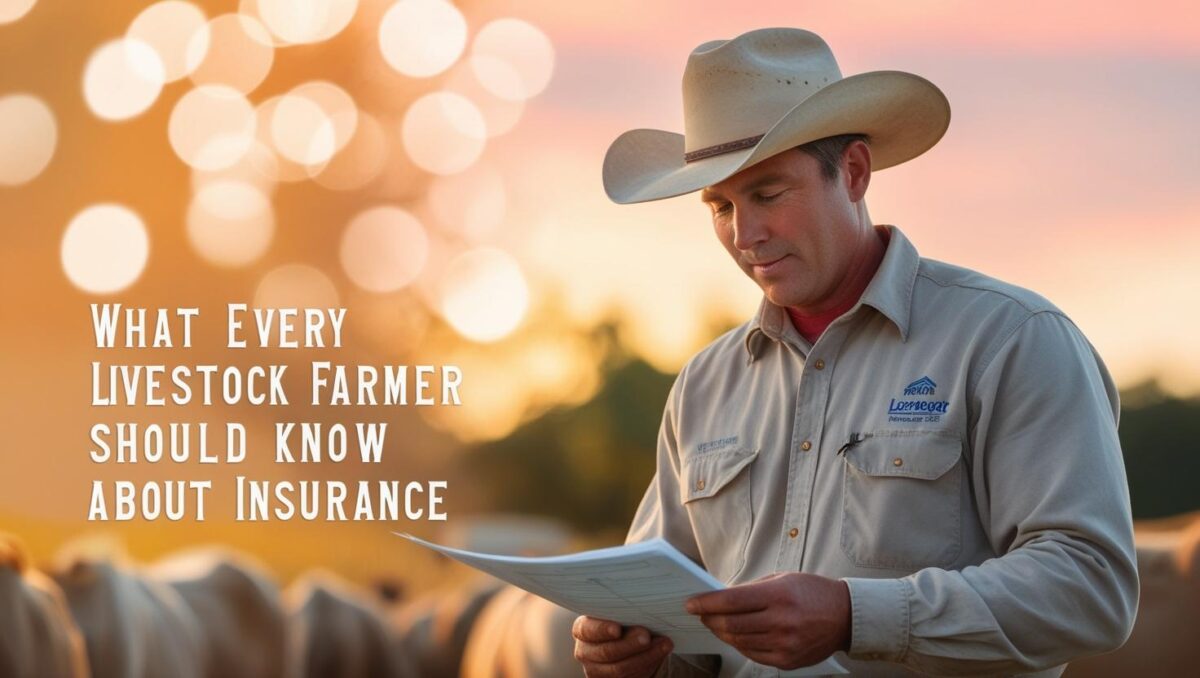Let’s be honest—farming in Australia isn’t exactly a cushy job. Between droughts, bushfires, floods, disease outbreaks, and rising input costs, running a livestock farm feels like spinning plates… on a windy day.
If you’ve got cattle, sheep, goats, pigs, or even alpacas on your property, you’re sitting on assets worth thousands—maybe hundreds of thousands. So here’s the question: are they properly protected with the right livestock insurance policy?
Let’s dive into what you need to know before things go pear-shaped.
Why Livestock Insurance Matters in Australia
Australia is home to over 25 million cattle and around 70 million sheep, according to the Australian Bureau of Statistics. That’s a lot of livestock—and a lot of risk if something goes wrong.
From flystrike to fire, there’s no shortage of ways your animals can be affected. And while farm insurance policies may give you broad coverage, they often don’t include specific livestock risks unless you add them on.
If you’re relying on luck rather than a proper policy, it might be time to rethink things.
Types of Livestock Insurance Policies
Here are the most common types of livestock cover available to Aussie farmers:
1. Mortality Cover
Pays out if your livestock dies due to illness, injury, or natural disasters.
2. Theft Cover
Yes, rural theft is real. If animals are stolen, you’re covered for the loss.
3. Transit Cover
Moving livestock between farms or markets? Transit cover kicks in if there’s a loss during the journey.
4. Specified Events Cover
Covers things like fire, lightning strikes, explosions, or even snake bites in some regions.
5. Stud Stock Insurance
Got high-value breeding animals? Stud stock policies cover loss of use, infertility, or death of elite animals.
What’s Covered Under a Farm Insurance Policy?
Most farm insurance policies are bundled, so you can pick and choose what you want:
- Property (homestead, sheds, fences)
- Machinery and tools
- Crops and produce
- Livestock (with optional add-ons)
- Public and product liability
- Business interruption
But remember: standard policies may not automatically include livestock. You’ll usually need to add a livestock insurance policy as a separate section or endorsement.
Common Exclusions You Should Watch For
Before you think, “Sweet, I’m covered,” check for these exclusions:
- Pre-existing health conditions
- Livestock not tagged or registered
- Negligence or failure to provide proper care
- Diseases not listed under covered events
- Animals older than a certain age (usually 10+ years for cattle)
And don’t assume “natural disaster” means everything—it usually requires you to list specific risks like bushfire or flood.
How Are Premiums Calculated?
Premiums will vary based on:
- Number and type of animals
- Value of livestock (market or insured value)
- Breed and use (stud, commercial, dairy, beef)
- Your location (risk-prone areas may cost more)
- Type of cover (basic vs comprehensive)
Let’s say you’ve got 100 head of cattle worth $1,200 each. A mortality and theft policy might run around $1,500–$2,000 a year, depending on the cover details. Not cheap, but a heck of a lot better than losing the lot and getting nothing back.
Why Work with an Insurance Broker?
We get it—insurance jargon is a headache. That’s why many Aussie farmers prefer working with a professional insurance broker who gets rural risks.
Here’s what a broker can do:
- Explain all the mumbo-jumbo in plain English
- Compare multiple insurers to get the best deal
- Bundle farm insurance and livestock cover
- Help you lodge claims quickly and properly
- Keep your policy updated as your operation grows
Look for brokers who specialise in agribusiness insurance. They know what to ask, what to avoid, and how to negotiate.
Filing a Claim: Keep It Simple and Fast
No one wants to deal with paperwork, but it’s better to be prepared.
Here’s how the claims process usually goes:
- Notify your insurer or broker ASAP (within 24–48 hours).
- Provide documentation: livestock tags, veterinary reports, photos, etc.
- Include any receipts or valuations if you’re claiming stud stock or special breeds.
- Most claims are processed within 2–4 weeks if everything’s in order.
Pro tip: keep digital records of everything. That includes tag numbers, purchase receipts, and vaccination history.
Mistakes Farmers Often Make with Livestock Insurance
A few common stuff-ups you’ll want to steer clear of:
- Assuming farm insurance covers livestock automatically
- Undervaluing your herd to save on premiums (you’ll regret it come claim time)
- Forgetting to update the policy when stock numbers or values change
- Not listing all risks (e.g. bushfire, drought)
- Letting your policy lapse during quieter seasons
A quick annual check-in with your insurance broker can help avoid most of these.
Is Livestock Insurance Worth It?
Short answer: yes. Think of it this way—would you drive a car without insurance? Of course not. Then why risk your farm’s most valuable assets?
With weather extremes and market volatility becoming the norm, a livestock insurance policy is just good business sense. And with the right broker in your corner, it doesn’t have to be a drama.
Final Thoughts
If you’re running livestock in Australia, having the right farm insurance setup could be the difference between bouncing back after a disaster or going under.
Don’t leave your herd unprotected. Talk to a local insurance broker, get a proper livestock policy in place, and sleep a bit easier knowing your farm’s future is secure.





